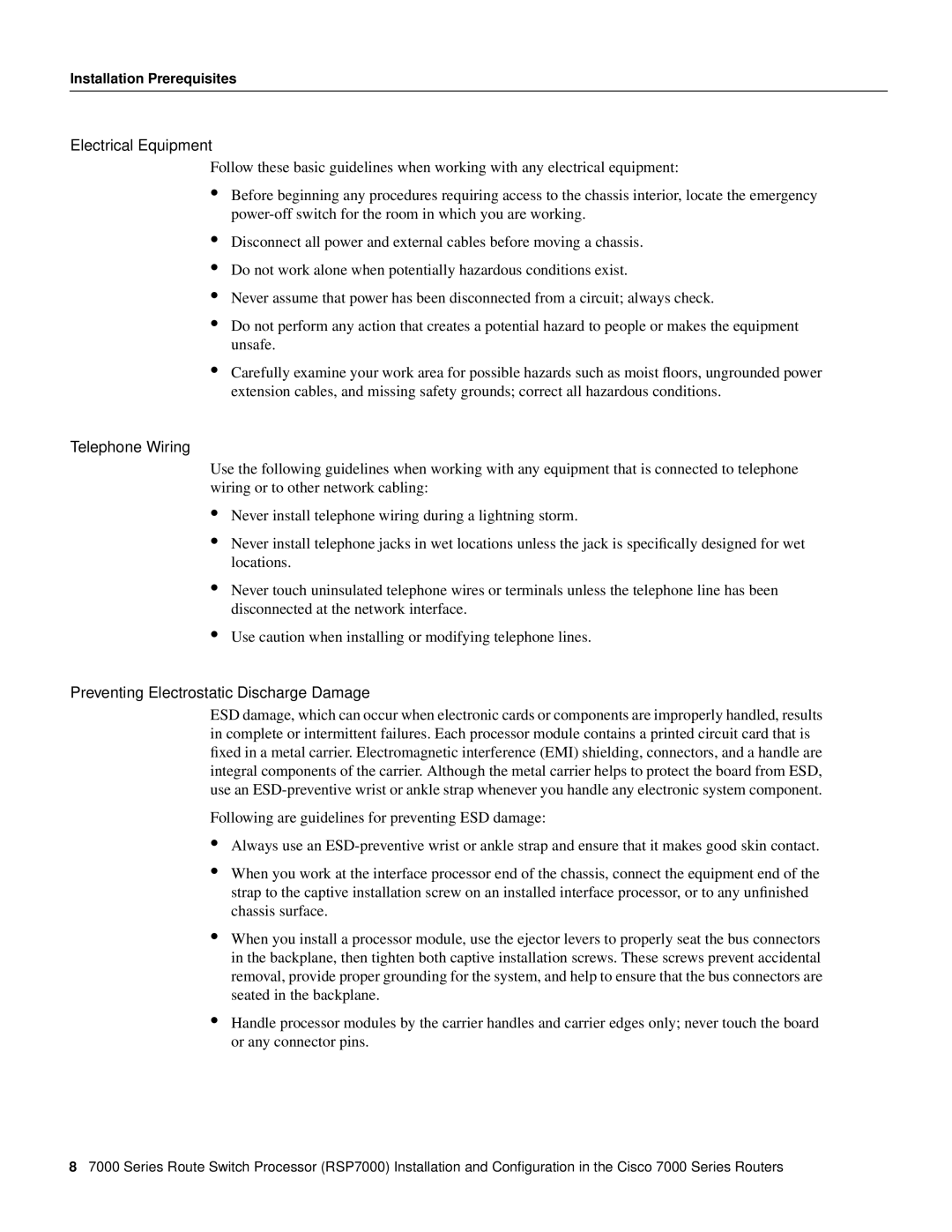Installation Prerequisites
Electrical Equipment
Follow these basic guidelines when working with any electrical equipment:
•Before beginning any procedures requiring access to the chassis interior, locate the emergency
•Disconnect all power and external cables before moving a chassis.
•Do not work alone when potentially hazardous conditions exist.
•Never assume that power has been disconnected from a circuit; always check.
•Do not perform any action that creates a potential hazard to people or makes the equipment unsafe.
•Carefully examine your work area for possible hazards such as moist floors, ungrounded power extension cables, and missing safety grounds; correct all hazardous conditions.
Telephone Wiring
Use the following guidelines when working with any equipment that is connected to telephone wiring or to other network cabling:
•Never install telephone wiring during a lightning storm.
•Never install telephone jacks in wet locations unless the jack is specifically designed for wet locations.
•Never touch uninsulated telephone wires or terminals unless the telephone line has been disconnected at the network interface.
•Use caution when installing or modifying telephone lines.
Preventing Electrostatic Discharge Damage
ESD damage, which can occur when electronic cards or components are improperly handled, results in complete or intermittent failures. Each processor module contains a printed circuit card that is fixed in a metal carrier. Electromagnetic interference (EMI) shielding, connectors, and a handle are integral components of the carrier. Although the metal carrier helps to protect the board from ESD, use an
Following are guidelines for preventing ESD damage:
•Always use an
•When you work at the interface processor end of the chassis, connect the equipment end of the strap to the captive installation screw on an installed interface processor, or to any unfinished chassis surface.
•When you install a processor module, use the ejector levers to properly seat the bus connectors in the backplane, then tighten both captive installation screws. These screws prevent accidental removal, provide proper grounding for the system, and help to ensure that the bus connectors are seated in the backplane.
•Handle processor modules by the carrier handles and carrier edges only; never touch the board or any connector pins.
87000 Series Route Switch Processor (RSP7000) Installation and Configuration in the Cisco 7000 Series Routers
